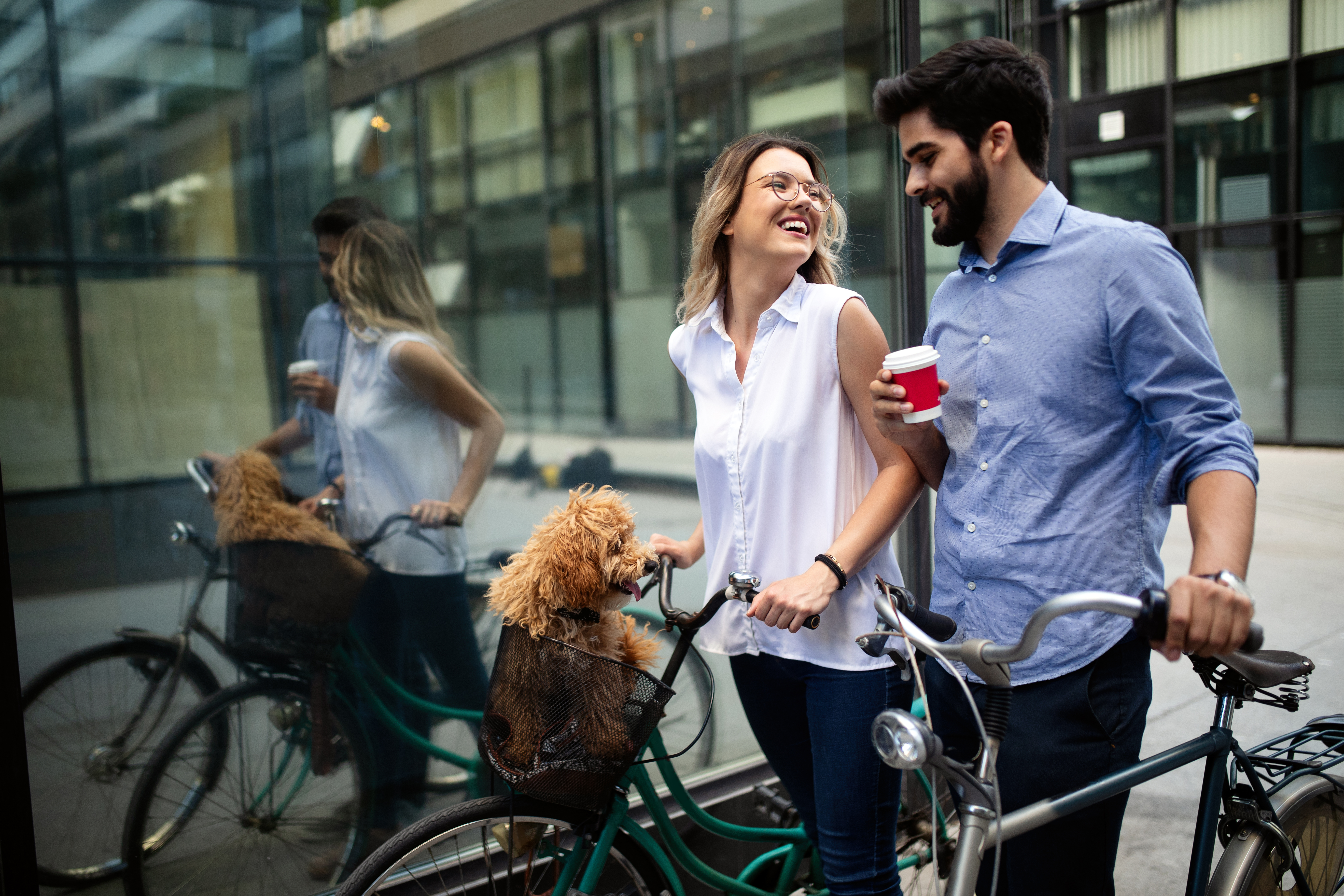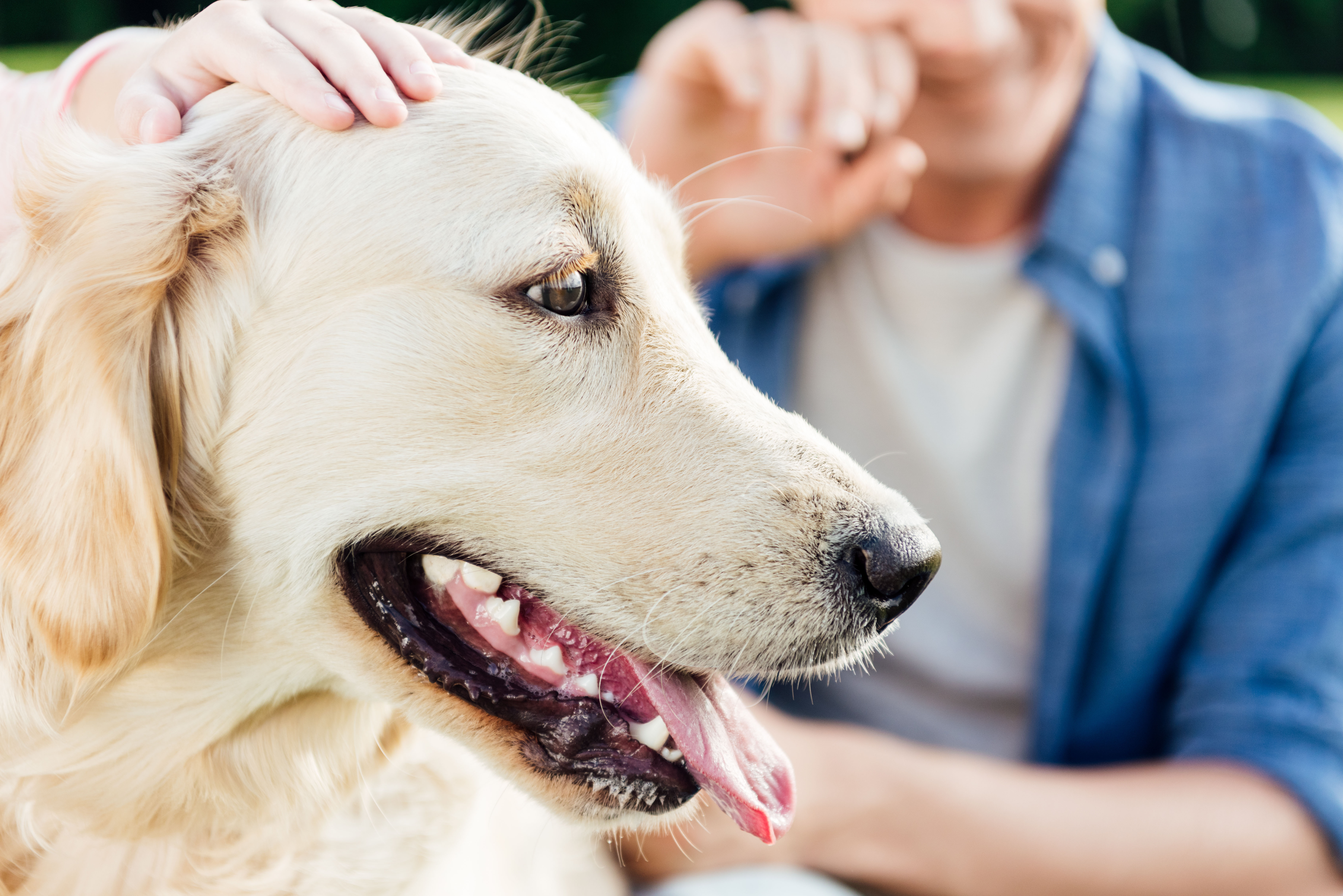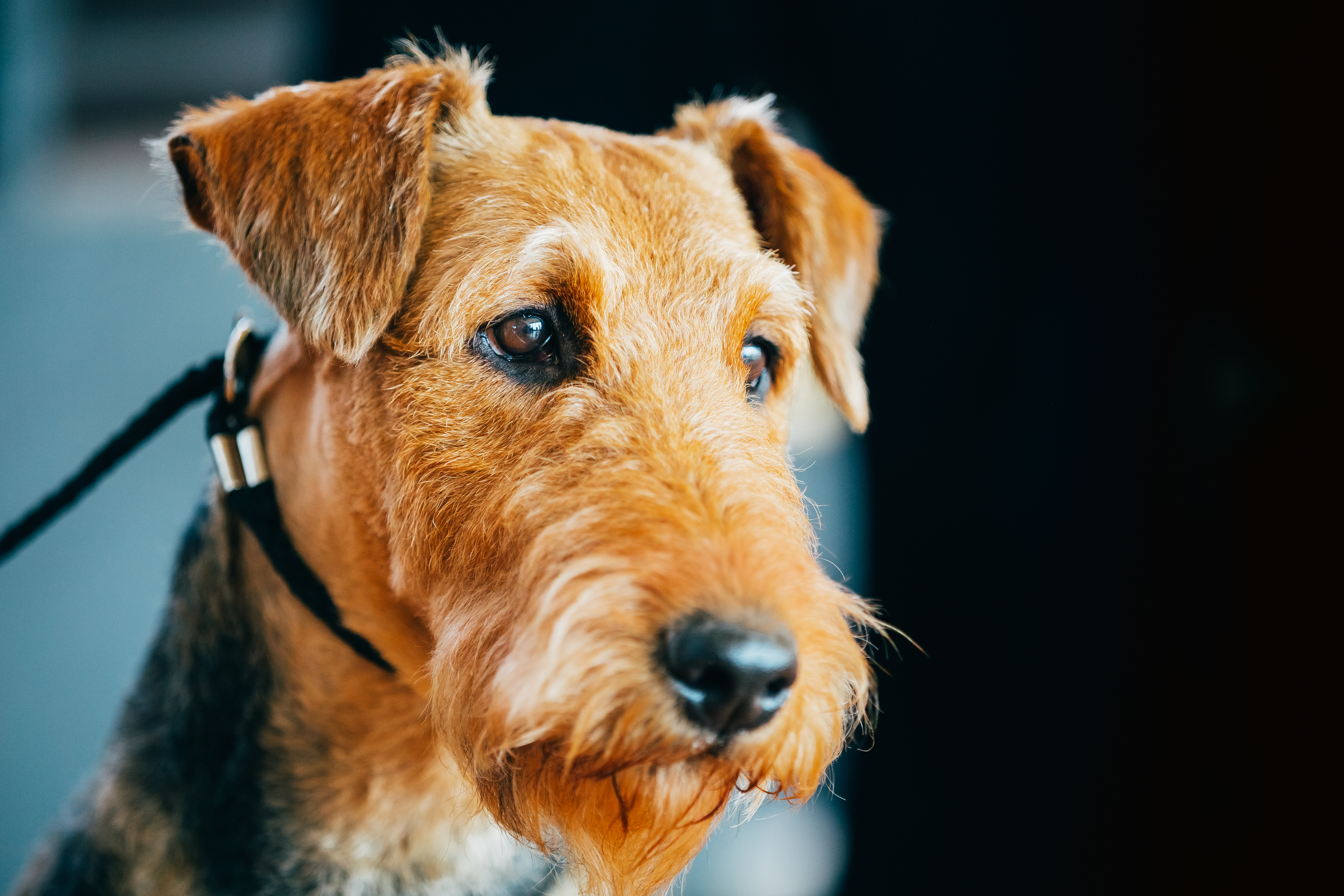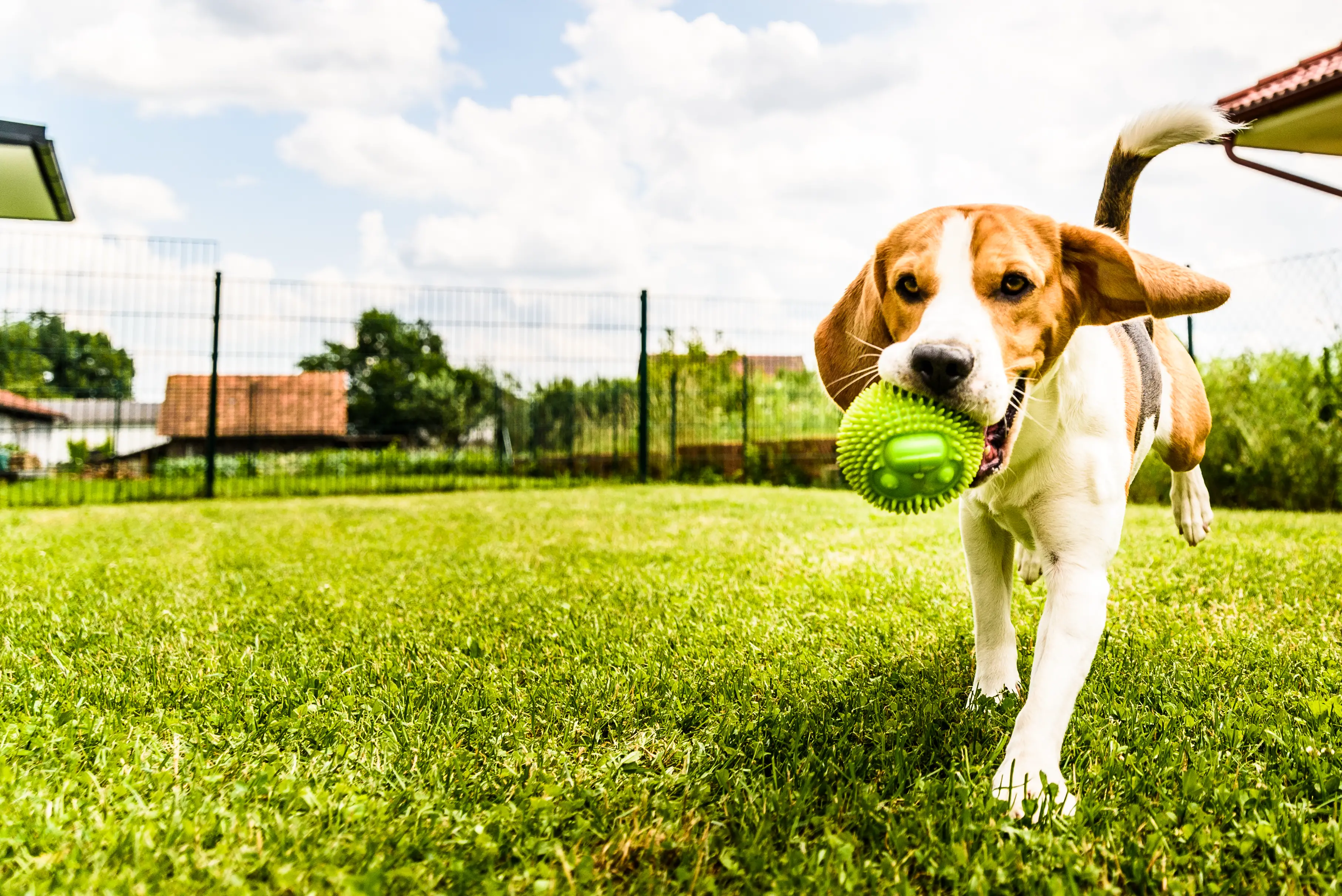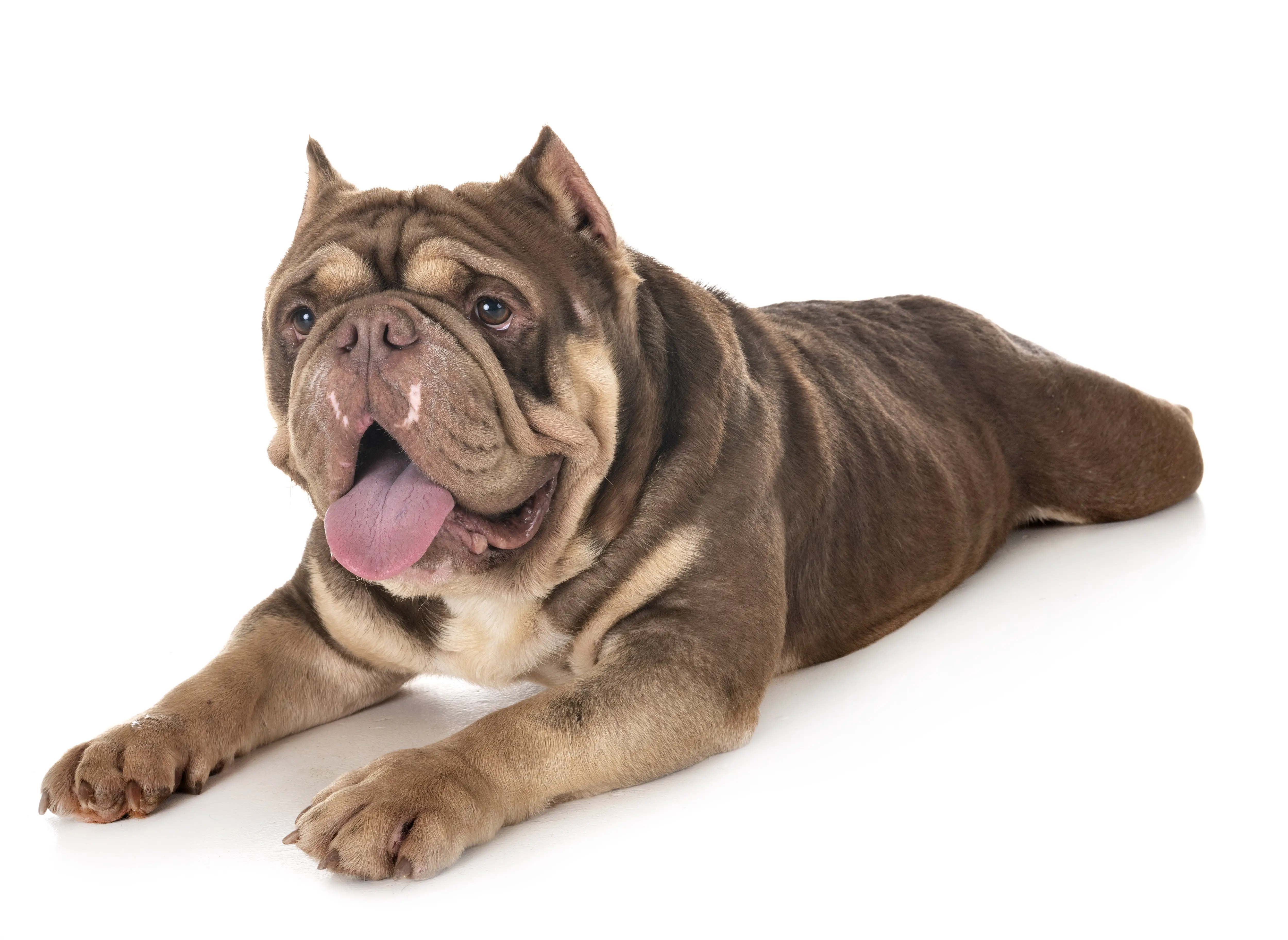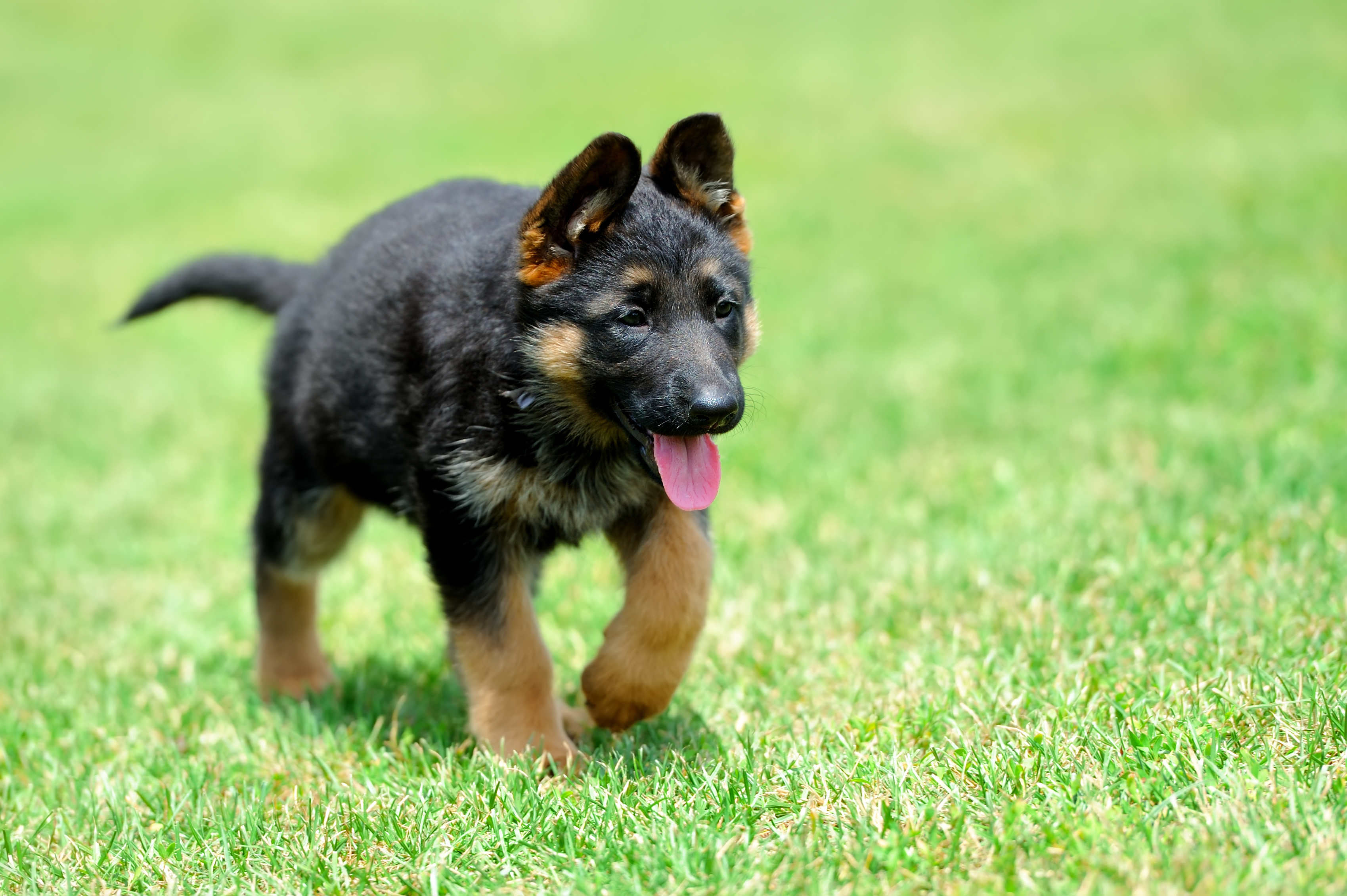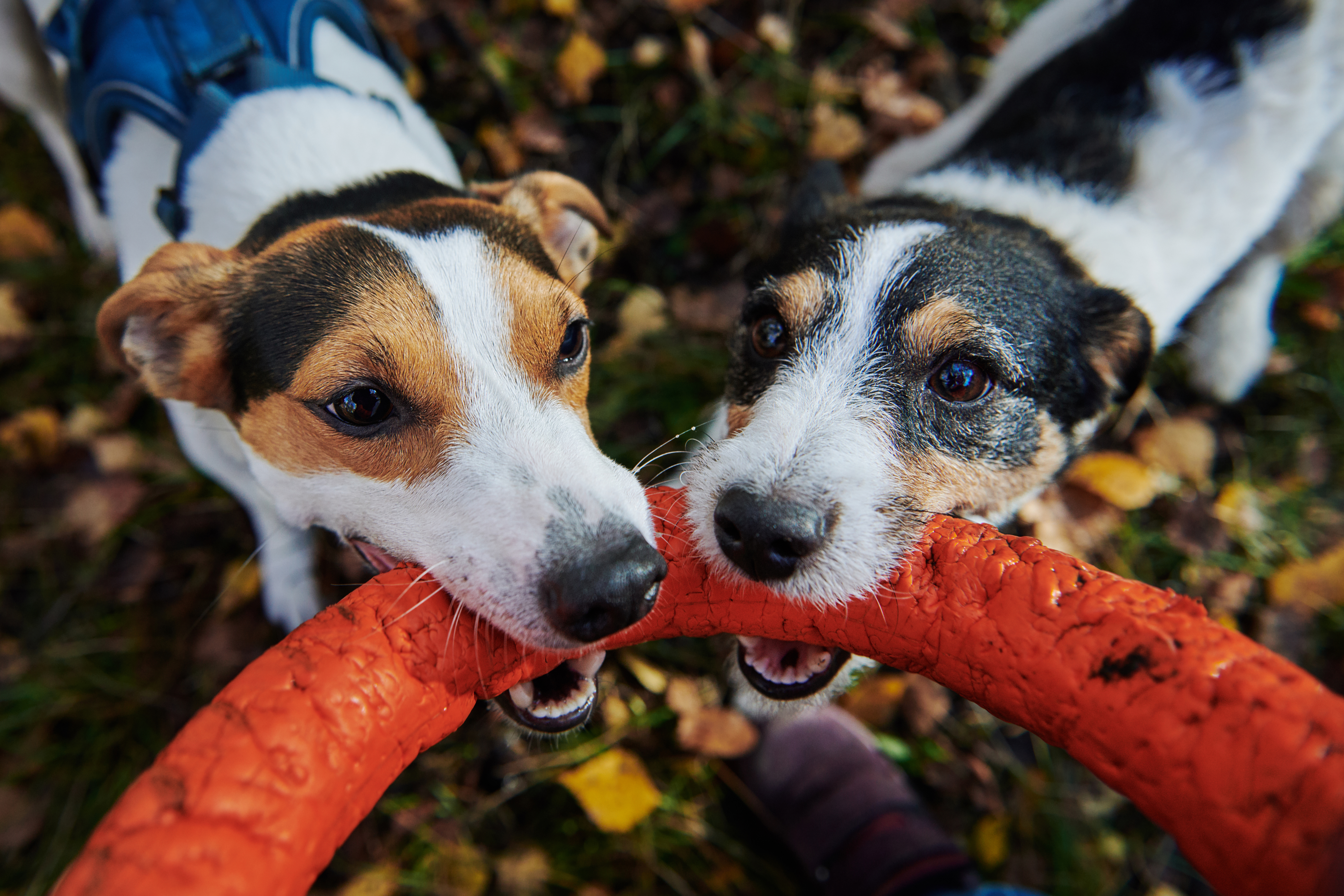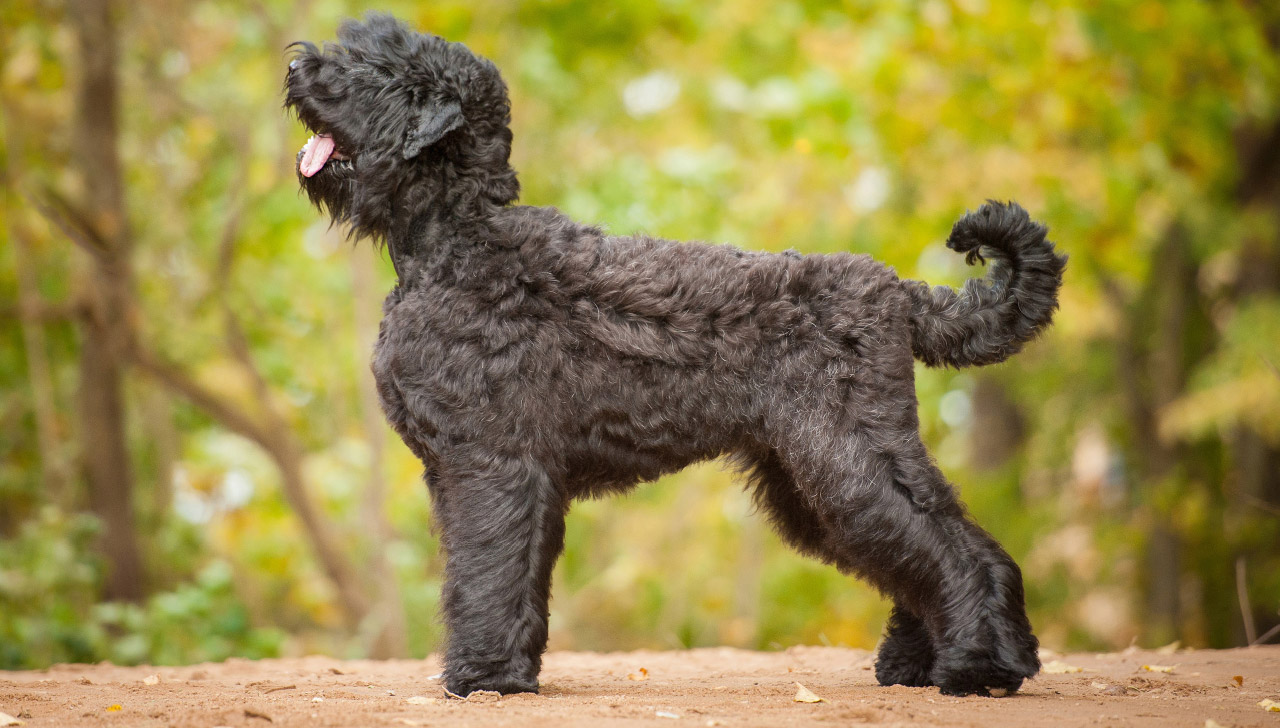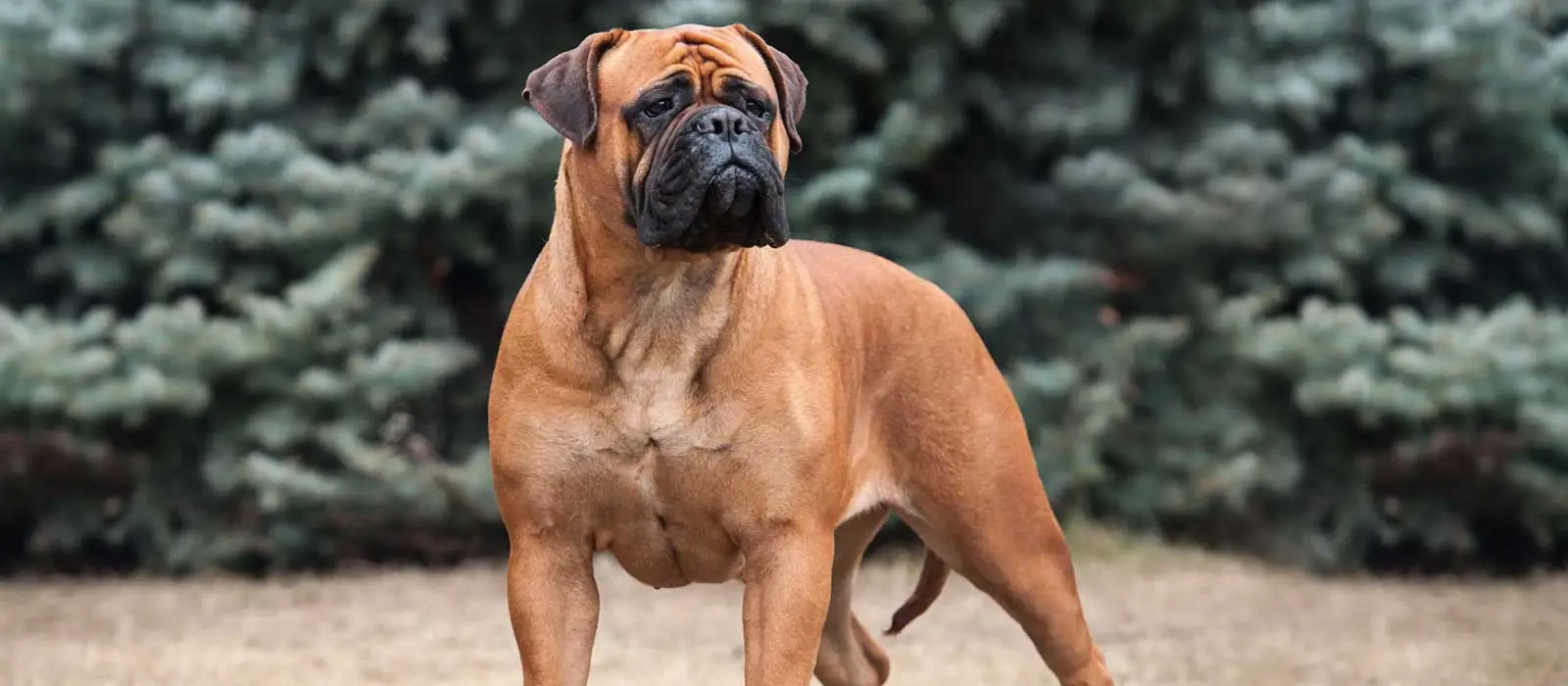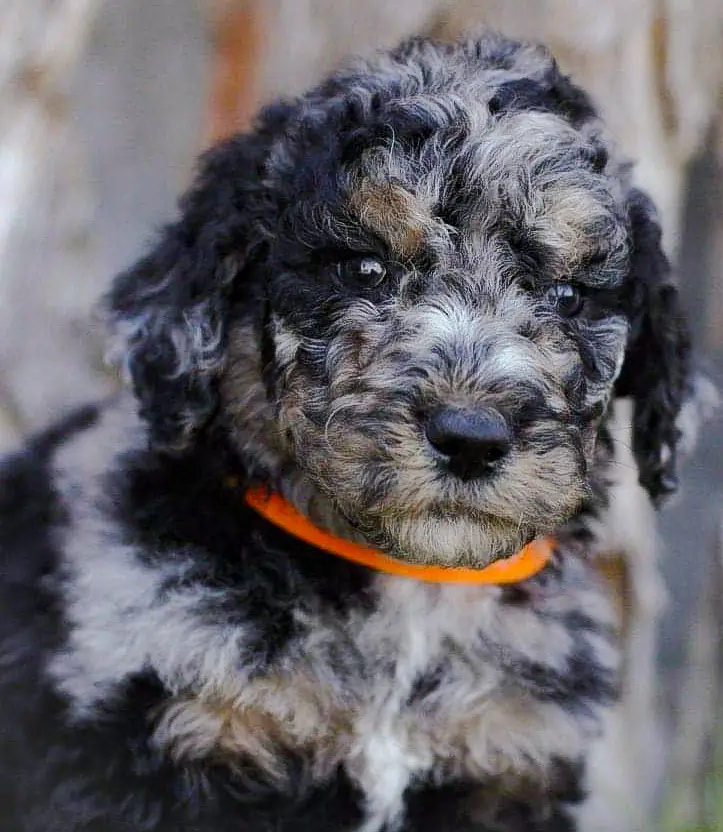15 Dog Breeds For Busy People Who Work All Day
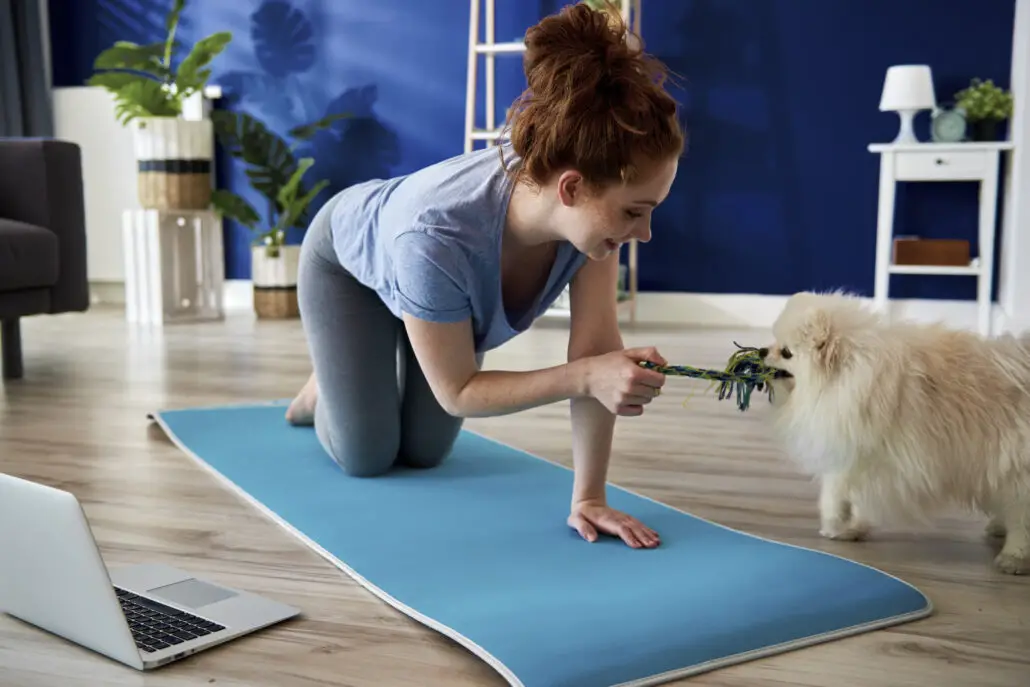
Do you want a dog companion, but fear that you might not spend enough time at home to take care of them?
These 15 breeds are better adapted to spending some time alone while you’re at work than most. Let’s have a look at them:
Chihuahua
Firstly, let’s look at one of the best known and most recognizable breeds in the world. These eccentric little entertainers with their big ears and round heads might be exactly what you need if your lifestyle doesn’t afford you the time to be at home, because you can quite literally take them with you everywhere you go.
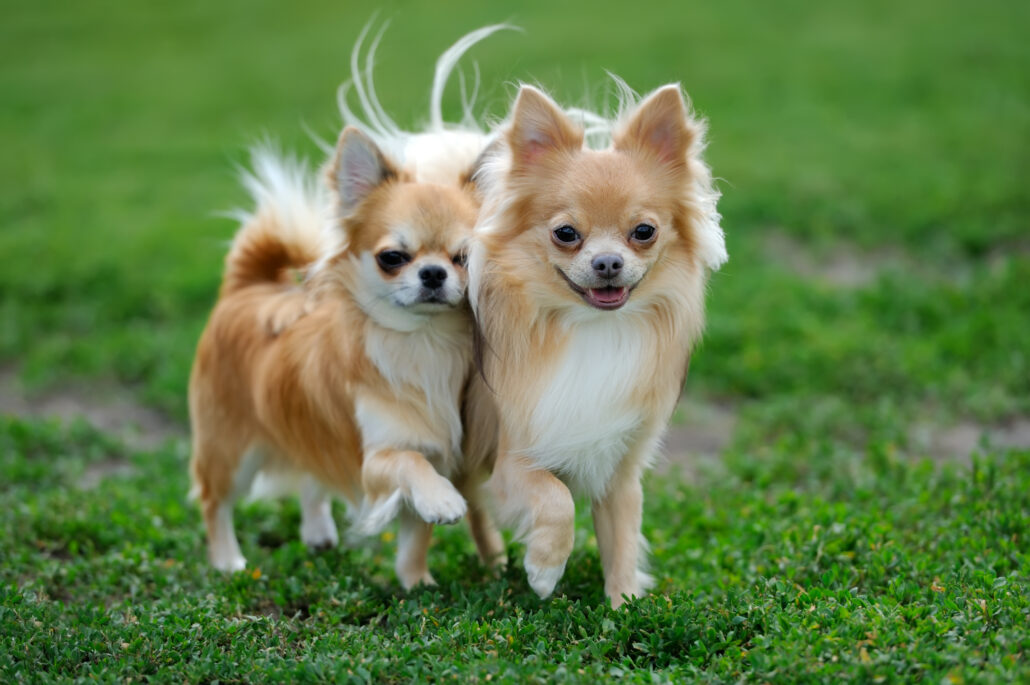
| Chihuahua | |
| Life Expectancy | 10-18 Years |
| Size | 15-22 cm tall, 1-3 kg in weight |
| Grooming | They don’t need a lot of grooming, a weekly brush and a monthly bath will do the trick. |
| Exercise Needs | They have A LOT of energy, therefore they do need quite a bit of exercise. |
| Health Issues | Patellar Luxation, Hypoglycemia, Heart Murmurs, Pulmonic Stenosis, Collapsed Trachea, Hydrocephalus, Open Fontanel, Shivers |
| Temperament | Despite their size, they are brave and suspicious of strangers. They are sensitive and thrive on companionship. |
| Family Pet or Guard Dog | While they may be good for warning you of danger, they won’t be able to protect you. Even though they make great companions, it is not recommended to have them in a family with very young children, simply because of how easily they can get hurt. Overall, they are perhaps more of a personal companion dog. |
Cons:
Chihuahuas can be quite needy, and although they can be crate trained, they do not enjoy spending too much time alone. Because of their size, they are also very fragile and need constant protection.
Pros:
They are absolutely adorable and tiny enough to be able to travel with you pretty much anywhere. They are generally healthy and can have long lives. They are also very clever and obedient. If they are trained well they will be perfectly well behaved while accompanying you.
French Bulldog
These adorably ugly critters are perfect for a single professional who just wants a companion to come home to after a long day at work.
Because they aren’t suited well for being outside, French Bulldogs don’t mind spending the day indoors, waiting for you.
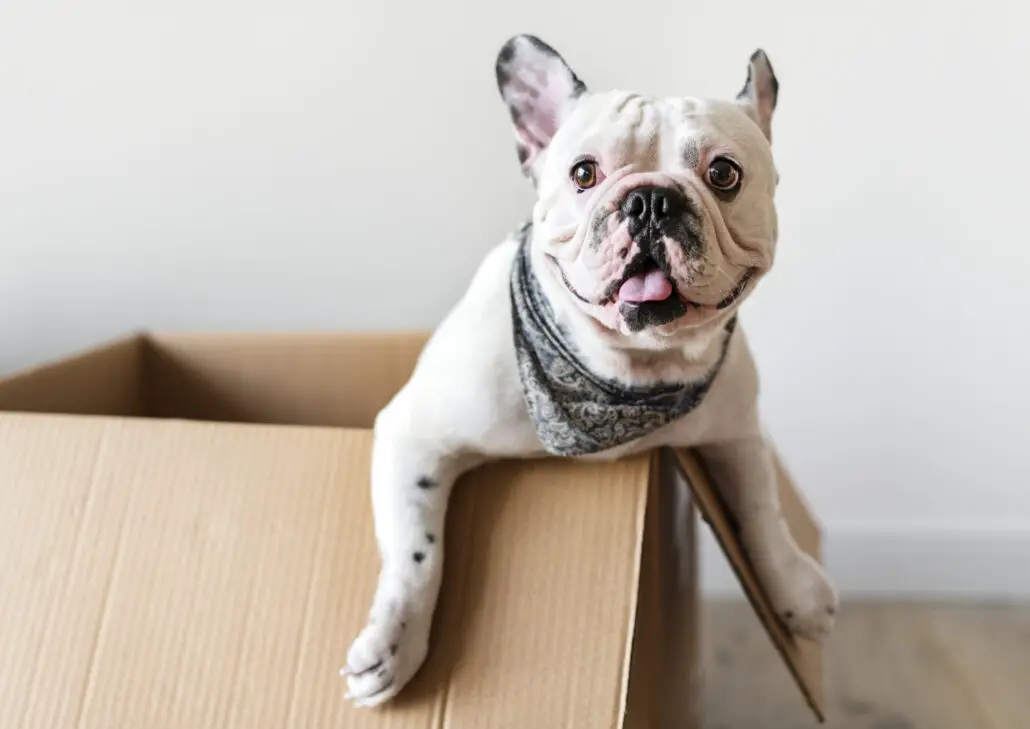
| French Bulldog | |
| Life Expectancy | 9-11 Years |
| Size | 27-30 cm tall, 11-15 kg in weight |
| Grooming | They don’t require much grooming at all. |
| Exercise Needs | They don’t need much exercise and aren’t built for jogging. They also shouldn’t be over-exercised during the warmer months. |
| Health Issues | Allergies, Hip Dysplasia, Pinkeye, Deafness, Cherry Eye, Brachycephalic Respiratory Syndrome, Stenotic Nares, Tracheal Collapse, Heat Stress, Elongated Soft Palate, Laryngeal Collapse, Hermivertebrae, Intervertebral Disc Disease, Cleft Palate, Von Willebrand’s Disease, Thyroid Issues |
| Temperament | They are even-tempered, as long as they are getting enough attention. |
| Family Pet or Guard Dog | They are not fitted well to be guard dogs, and they tend to challenge other family members for your attention. Thus, they are more suitable for single companionship. |
Cons:
Because they are clever and independent, they can be quite naughty at times. They’re also not well adapted for the heat, so if you live in warm areas they’ll have to be provided with air conditioning. They are also known to be quite possessive and might compete with family members for your attention.
Pros:
They are extremely loving and loyal and highly entertaining. They adjust very well to apartment living, and won’t be bothering your neighbors with excessive barking.
Cavalier King Charles Spaniel
If you’re after a companion that is perpetually happy, the Cavalier King Charles Spaniel is perfect for you.
No matter where you go or what you do, you will have a wagging tail nearby. They are some of the friendliest dogs ever.
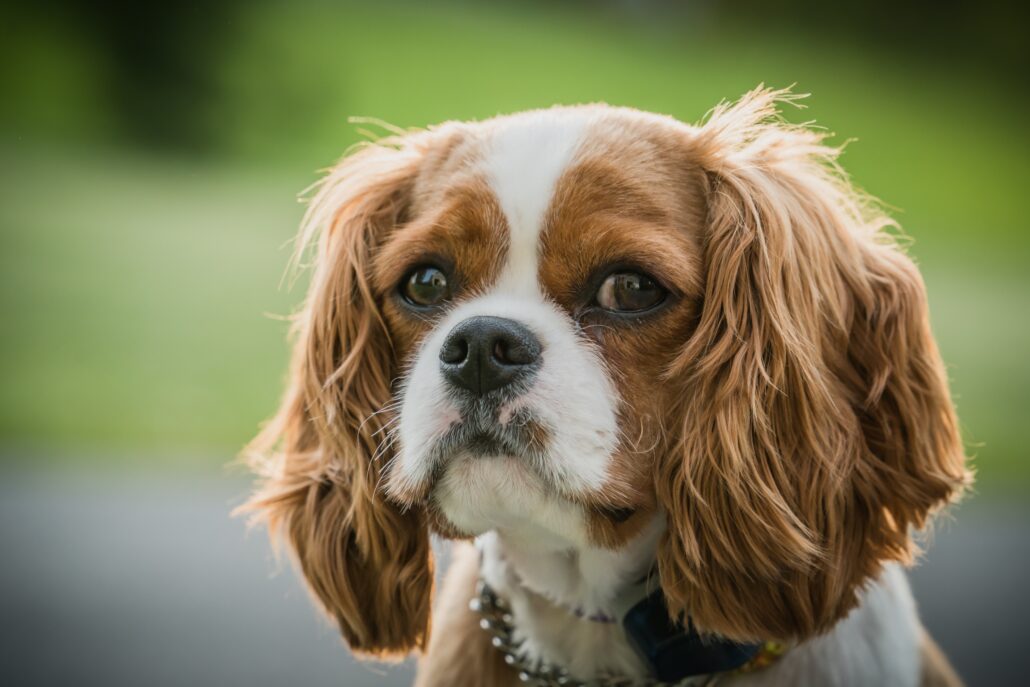
| Cavalier King Charles Spaniel | |
| Life Expectancy | 9-15 Years |
| Size | 30-33 cm tall, 6-8 kg in weight |
| Grooming | They are average shedders. While they do need to be brushed regularly, and bathed quite often to prevent matting, they do not require any special grooming. |
| Exercise Needs | They are only moderately active, so they don’t need that much exercise, playing in a small yard will be enough. If they do go on walks they should be kept on a leash, as they aren’t very street smart. |
| Health Issues | Mitral Valve Disease, Syringomyelia, Episodic Falling, Dry Eye, Hip Dysplasia |
| Temperament | They are extremely friendly and loving. |
| Family Pet or Guard Dog | They are too friendly to be guard dogs, as they might not even bark at strangers. They are best suited as family pets, they are loving and gentle and play very well with children. |
Cons:
They are very attached to their humans, and won’t like being left alone. They also shed a bit.
Pros:
You won’t find a friendlier dog anywhere, they love everyone and will bring you tons of joy. They can also live to be quite old, so they can be by your side for a long time.
West Highland White Terrier
Westies are a great match for people who might not have a lot of free time. They are very sociable with other dogs and don’t mind entertaining themselves while you are at work. Then, when you return, they will entertain you and love you.
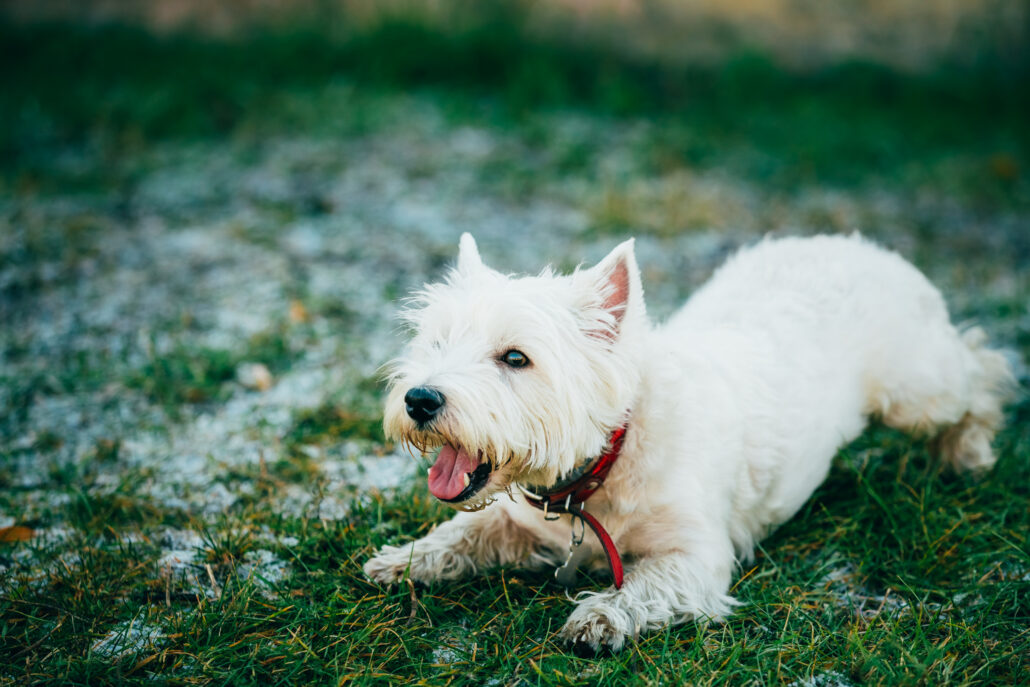
| West Highland White Terrier | |
| Life Expectancy | 12-14 Years |
| Size | 25-27 cm tall, 7-10 kg in weight |
| Grooming | Their coats need to be combed about 3 times per week, and they need to be taken to professional groomers every 3 months. |
| Exercise Needs | A moderate walk or a bit of playing in the yard is enough exercise for them. |
| Health Issues | Globoid Cell Leukodystrophy, Legg-Perthes, CMO, Skin Disease, Cataract, Patellar Luxation |
| Temperament | They are happy, curious and friendly towards humans. They do however not get along with other small pets. |
| Family Pet or Guard Dog | They can be quite vocal, so they may act as a good alarm, but they lack the physicality to protect you. They are best fit to be family pets, as they are well behaved and loving. |
Cons:
They are notorious barkers if they aren’t trained otherwise. Small pets like rodents or rabbits are at risk of being hunted down due to their Terrier instinct.
Pros:
They are very easy to housetrain, they don’t shed much and they don’t get separation anxiety. Apart from all that, they are also wildly entertaining and loving.
Dachshund
They may be famous hunters, but they can also be perfect companions. They are very intelligent and hilariously quirky. They are easy to care for and adapt to apartment living with ease.

| Dachshund | |
| Life Expectancy | 12-15 Years |
| Size | 20-22 cm tall, 7-14 kg in weight |
| Grooming | They don’t shed excessively, but their required grooming will differ depending on their type of hair. Smooth Dachshund can simply be wiped down every now and then, while longer-haired Dachshunds need to be brushed more regularly. |
| Exercise Needs | They are hunters, so they have a lot of energy. They like going for walks, digging and fetching. |
| Health Issues | Intervertebral Disk Disease, Epilepsy, Progressive Retinal Atrophy, Bloat, Cushings Disease, Canine Diabetes, Deafness |
| Temperament | They are extremely clever and very brave (often to their own detriment). While they are known to be hunters, they are not meant to live outside and need human care. They are protective of children they know and dominating over other dogs. |
| Family Pet or Guard Dog | They are very vocal alarm dogs, but not physically capable of protecting you. They get along well with children as well. So a Dachshund could be both a family pet and a good alarm dog. |
Cons:
They are infamous for developing back problems. They are sometimes difficult to housetrain and because they are excellent hunters they might often bring you gifts consisting of dead rodents or birds. They also become quite possessive and may try to establish dominance over other family members.
Pros:
Super loyal and clever, they make great companions. They are smart enough to be independent, even though they still appreciate love and attention.
Greyhound
These renowned speedsters make surprisingly great pets. Loyal, loving and easily satisfied, they may be the perfect companion for a busy professional. They are very independent and enjoy lazing around, so they won’t mind it too much when you leave for work.
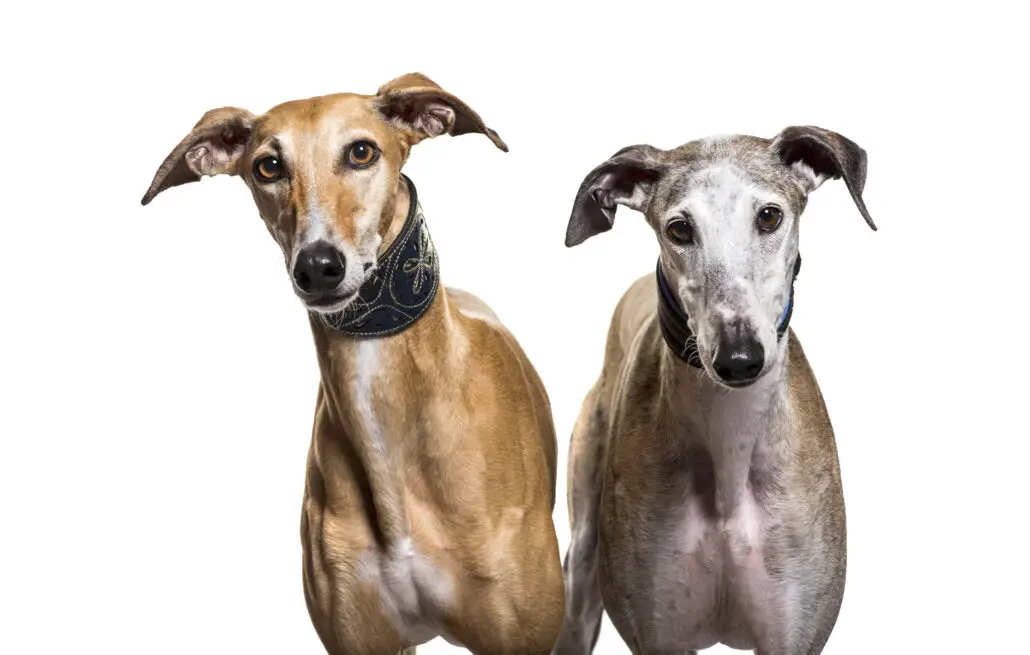
| Greyhound | |
| Life Expectancy | 12-15 Years |
| Size | 64-67 cm tall, 22-38 kg in weight |
| Grooming | Even though they have a short, smooth coat that is easy to groom they do shed quite a lot, so they should be brushed daily. |
| Exercise Needs | They are famously athletic, but surprisingly low energy, and they don’t need that much exercise. They do need to be taken for walks or be allowed to run around to prevent boredom. When walking they must be kept on a leash as their natural instinct is to chase after prey. |
| Health Issues | Anesthesia Sensitivity, Hypothyroidism, Osteosarcoma, Bloat |
| Temperament | They are not aggressive at all. They are very independent, but still need to be shown love and care. They tend to be comfortable with other dogs, but they may see small pets as prey. |
| Family Pet or Guard Dog | They are very friendly, and not very vocal, so they aren’t great guard dogs except for perhaps looking intimidating. They are well suited to be family pets, as they are loving, gentle and loyal. |
Cons:
They do shed quite a lot and don’t do well in colder climates. Because of their hunting instincts, they also cannot be walked off of a leash and need to be fenced in when playing in a yard.
Pros:
They are relaxed and independent, making them great for people who need to go to work. They are friendly, highly trainable and amazingly athletic.
Brussels Griffon
Despite their grumpy-looking face, they are energetic and playful with a great sense of humor. They will be your loving and loyal companion for up to 15 years.

| Brussels Griffon | |
| Life Expectancy | 12-15 Years |
| Size | 17-25 cm tall, 3-5 kg in weight |
| Grooming | They do not require much grooming, their coats have to be brushed weekly and they can visit a professional groomer once or twice a year. |
| Exercise Needs | They have a lot of energy and need a lot of exercise. They do tend to overheat, however, so be sure to let them exercise during the cooler periods of the day. |
| Health Issues | Heat Stroke, Hip Dysplasia, Patella Luxation, Allergies, Eye Problems |
| Temperament | They are very headstrong and do not appreciate unwanted hugs or being forced to sit on a lap. They tend to get along well with other dogs but have also been known to challenge dogs that are much bigger than them which could result in injury for them. |
| Family Pet or Guard Dog | While they might bark at intruders they can’t keep you safe, they are a great family pet provided they are treated right, so a family with small children should perhaps wait until the children are old enough to understand their actions before adding a Brussels Griffon to the family. |
Cons:
Although they are great pets, Brussels Griffons are not for inexperienced dog owners. They have a natural tendency to bark a lot and need to be trained to be well behaved. They do not like to be ignored or left alone and they are very fragile so they need to be protected.
Pros:
They thrive inside the house, which makes them great for apartment-dwellers. You will also never be alone if you have one of them, they’ll stick to your side like glue.
Shar Pei
Shar Peis have a rich history, from being bred as guard dogs in China hundreds of years ago, to the loving family pets that they have become today.

| Shar Pei | |
| Life Expectancy | 8-12 Years |
| Size | 45-50 cm tall, 18-24 kg in weight |
| Grooming | Bathing them too much might irritate their skin, they should be bathed only once every 3 months or so, depending on what they’ve been doing, and a weekly brush will be more than adequate. The most important part of grooming a Shar Pei is making sure that he is dried between the folds of his skin to prevent fungal infections. |
| Exercise Needs | They need daily exercise, but a quick walk will be enough. |
| Health Issues | Shar Pei Fever, Hypothyroidism, Cancer, Elbow Dysplasia, Mange, Skin Conditions, Hip Dysplasia, Bloat, Glaucoma |
| Temperament | Very loyal to their family, but wary of strangers. They are intelligent and independent. They have been known to be aggressive with other dogs. |
| Family Pet or Guard Dog | Because they are protective, loyal, strong and gentle, they make both amazing guard dogs and loving family pets. |
Cons:
Without proper training, their tendency is to bark quite a lot. Bred as fighters, they tend not to get along well with other canines.
Pros:
They are devoted family dogs. They will both guard and entertain you and your loved ones. Grooming them is extremely easy and they can adapt to almost any living situation. They are smart and independent and can be left to their own devices.
Maltese Lap Dog
These beautiful, gentle dogs will make a great, almost teddy-like companion for anyone. They are soft, loving and cuddly. They look almost magical, seeming to move without walking under their slick white coats.
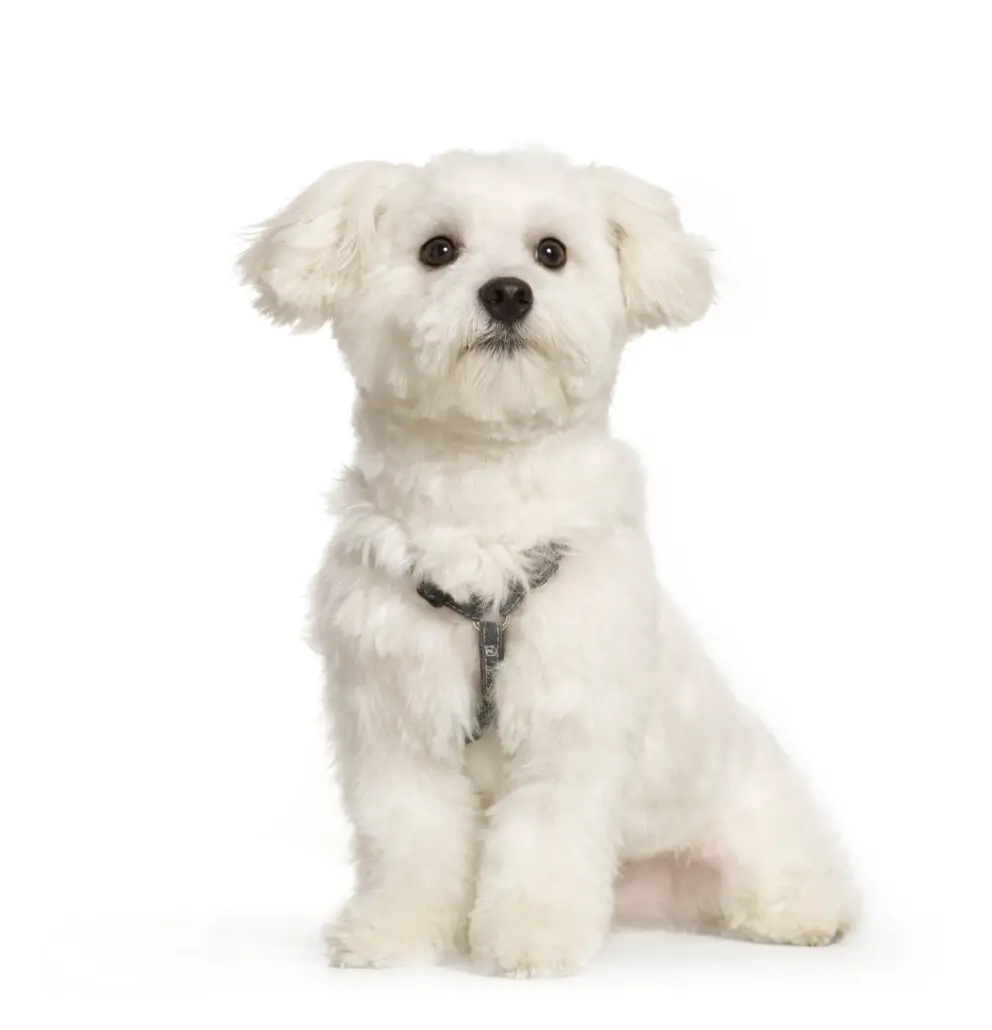
| Maltese Lap Dog | |
| Life Expectancy | 12-15 Years |
| Size | 20-25 cm tall, 3 kg in weight |
| Grooming | Because of their long, beautiful hair, they need to be brushed and combed daily and bathed almost once a week. |
| Exercise Needs | They have a lot of energy, but because they are so small and can play indoors they do not need much exercise. |
| Health Issues | Patellar Luxation, Portosystemic Liver Shunt, Progressive Retinal Atrophy, Hypoglycemia, White Dog Shaker Syndrome, Collapsed Trachea, Reverse Sneezing |
| Temperament | They have adorable personalities and assume everyone and everything they meet is a friend. They are very playful and respond well to training. |
| Family Pet or Guard Dog | Definitely not a guard dog. They are extremely well suited as a family pet because they are so loving and friendly. |
Cons:
They may not like other animals or very small children, simply because they have to be handled gently. Their beautiful coats require maintenance and they are often difficult to housetrain. Unfortunately, they are also known for having delicate digestive systems. They also won’t do well left alone.
Pros:
They really are beautiful and will love you deeply. They don’t shed much and are well adapted for living indoors. They are so incredibly sweet that they can brighten up anyone’s day.
Akita Inu
This big and powerful dog can make for a surprisingly loving and gentle companion. They will protect and love you for the duration of their lifetime. Its beautiful and soft features should not mislead you into thinking that it isn’t capable of protecting you, they are powerful and fiercely loyal.
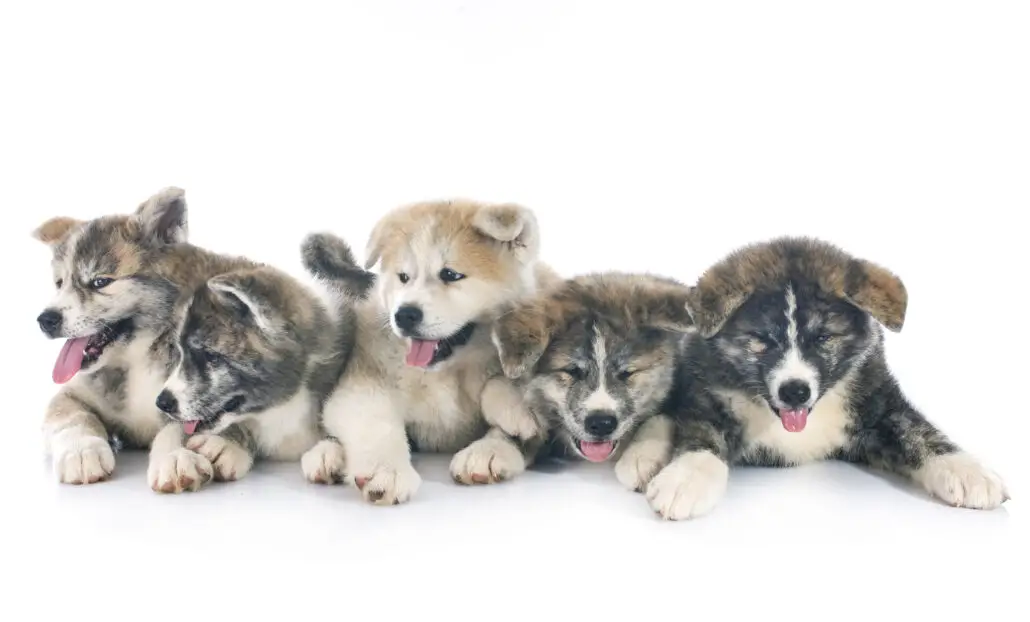
| Akita Inu | |
| Life Expectancy | 10-12 Years |
| Size | 60-73 cm tall, 31-60 kg in weight |
| Grooming | They are heavy shedders, but they do not require much grooming. Brushing their hair reduces shedding, and they’ll require a bath once every couple of months. |
| Exercise Needs | They are not very energetic but still need daily exercise. Short walks or jogs will do the trick. |
| Health Issues | Hip Dysplasia, Bloat, Hypothyroidism, Progressive Retinal Atrophy, Sebaceous Adenitis |
| Temperament | They are strong-willed and brave. While they will be loyal to and playful with their family, they are known to be aggressive with strangers and other animals. |
| Family Pet or Guard Dog | They make brilliant guard dogs, in fact, they were used to guard the Japanese royal family. They can also be loving and playful as a family pet, but because they are so dangerous they should not be left alone with small children. They are best suited to be guardians. |
Cons:
Because they are so protective, they might be dangerous to strangers or other animals if not introduced properly. They need intense, intimate training and are not a good option for novice dog owners. They shed a lot! They are happiest when living inside with their owner, but still need a yard for activities.
Pros:
They are amazing guard dogs and will protect you under all circumstances. They are also very loving and extremely loyal. They are perfect for single people or couples who work from home.
Italian Greyhound
The Italian Greyhound is an excellent family pet. They are fun, loving and intelligent. They are small enough to be kept in an apartment, but still athletic and active enough to be more than a lap dog.
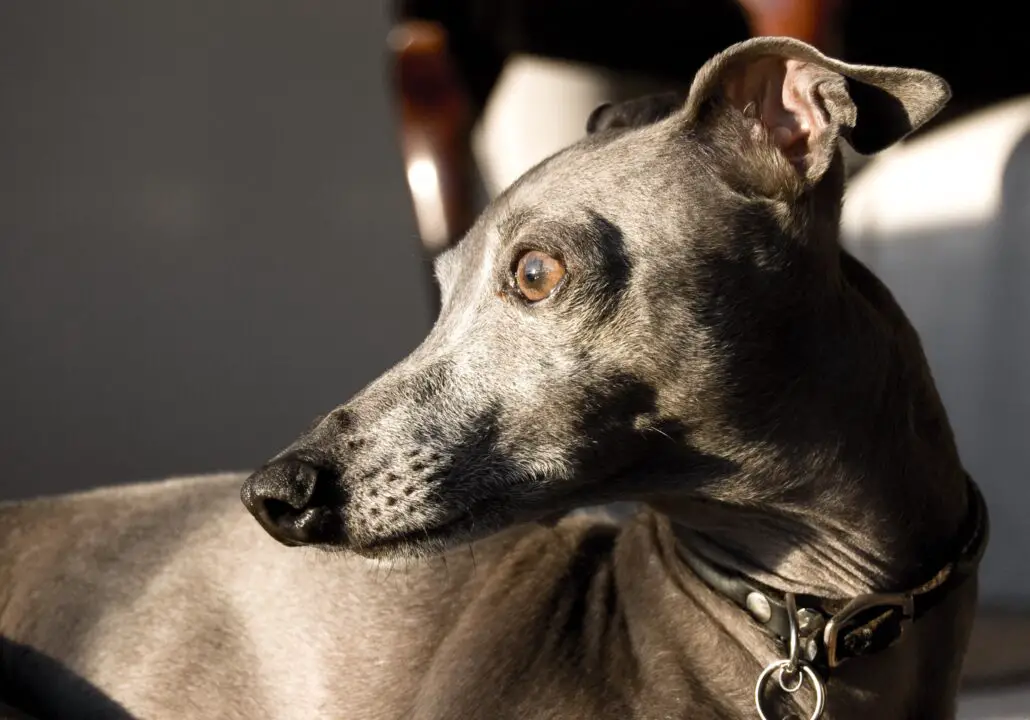
| Italian Greyhound | |
| Life Expectancy | 14-15 Years |
| Size | 33-38 cm tall, 3-6 kg in weight |
| Grooming | Their beautiful coats don’t shed much and only needs to be brushed when it gets dusty, or bathed when they get filthy. |
| Exercise Needs | They have a lot of energy, especially while they’re young. Daily exercise is needed to keep them from getting bored. |
| Health Issues | Cataracts, Von Willebrand’s Disease, Vitreous Degeneration, Progressive Retinal Atrophy, Hypothyroidism, Legg-Calve-Perthes Disease, Patellar Luxation, Hip Dysplasia, Allergies, Epilepsy, Cryptorchidism, Portosystemic Shunt |
| Temperament | They are loving but sensitive, they may come across as very shy towards strangers. |
| Family Pet or Guard Dog | They do not bark much and are too small to protect you, so they aren’t great guard dogs. They are, however, amazing, loving family pets. |
Cons:
They can be very difficult to housetrain and they are quite shy around strangers. They also do not enjoy being alone.
Pros:
They are small enough to live in an apartment, provided they get exercise. They are extremely fun and playful and will love you unconditionally. They are also very easy to groom and they don’t shed much
Chow Chow
Chow Chows are absolutely adorable, they look like their faces are drowning in fur. They are independent and won’t mind staying home alone, as long as they have a yard to play in.
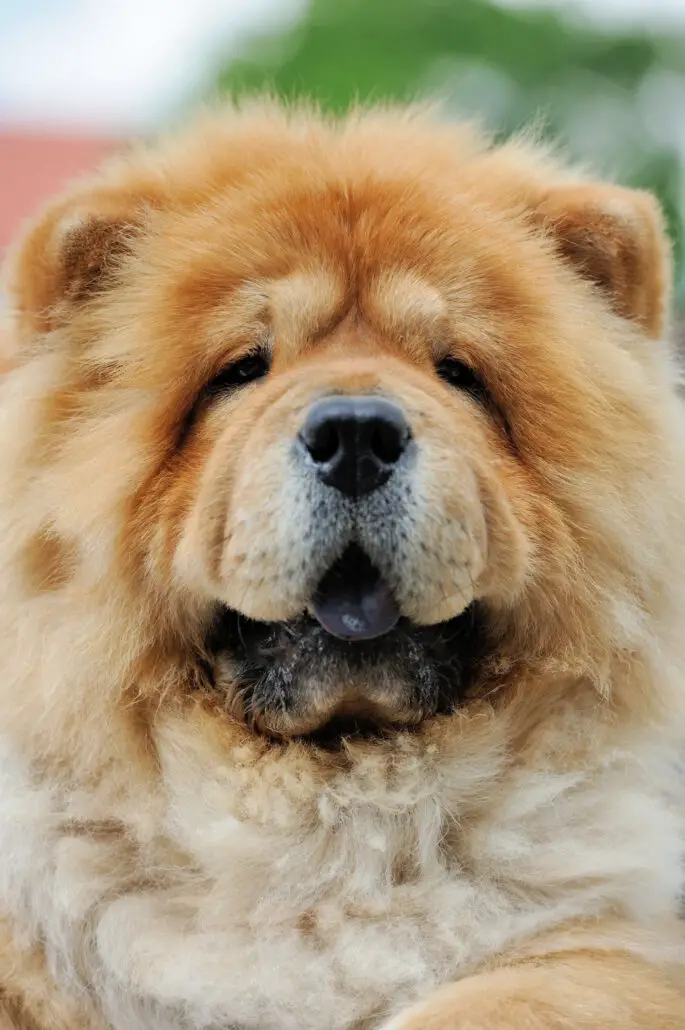
| Chow Chow | |
| Life Expectancy | 12-15 |
| Size | 43-50 cm tall, 18-31 kg in weight |
| Grooming | They are seasonal shedders. Their coats have to be brushed a couple of times per week, but they do not have to be bathed as regularly. |
| Exercise Needs | They do not do well in the heat, and a couple of short exercises per day will be sufficient. |
| Health Issues | Hip Dysplasia, Entropion |
| Temperament | They are reserved and independent. While they will be playful and loving with their family, they will challenge strangers and other dogs of the same sex. Children must also be taught how to treat them respectfully, or else they might snap at them. |
| Family Pet or Guard Dog | The Chow Chow makes for an excellent guard dog. They could also be a great family pet if they are treated right. |
Cons:
Their beautiful coats require maintenance, and they are very aloof. They will challenge strangers if not introduced properly. They are very sensitive to heat.
Pros:
They do not require constant attention, yet they are still loving. They will also protect you and your house from unwelcome guests.
Whippet
These hunting proteges also make amazing companions. They are friendly, they look great and provided they get enough exercise, they can even adapt to living in an apartment.
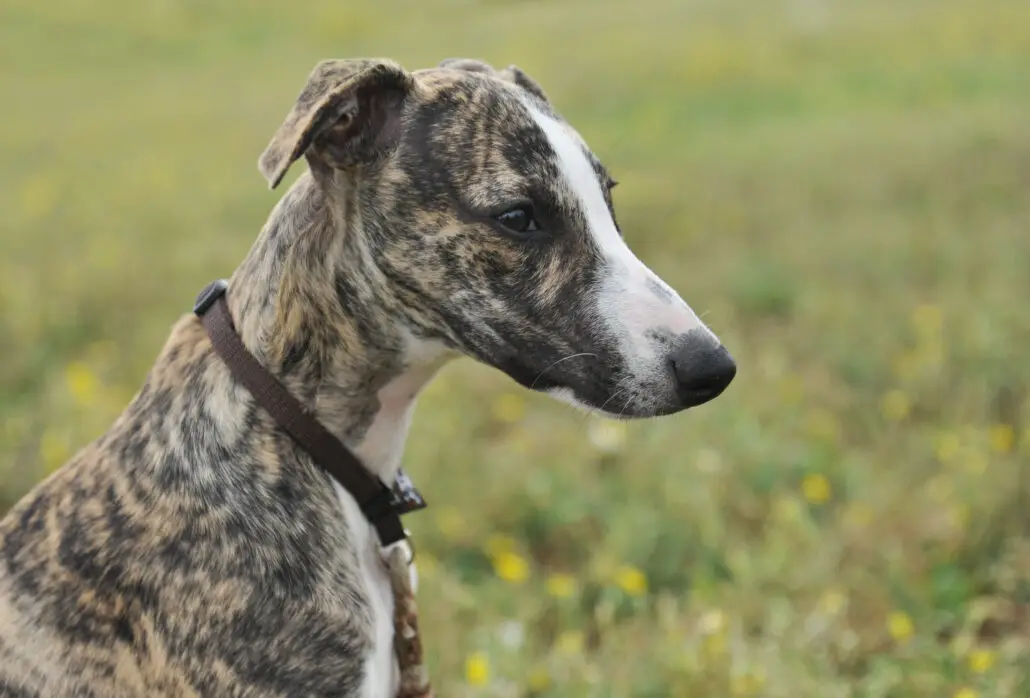
| Whippet | |
| Life Expectancy | 12-15 Years |
| Size | 45-55 cm tall, 8-21 kg in weight |
| Grooming | They don’t shed much but weekly brushing will keep their coats shiny. They only need to be bathed if they get dirty. |
| Exercise Needs | They have intense, yet short-lived bursts of energy. A couple of short walks daily, or a yard to play in will be ample exercise. |
| Health Issues | Anesthesia Sensitivity, Deafness, Eye Disease, Von Willebrand’s Disease |
| Temperament | They are calm and gentle pets. Instinctively they are hunters, they might chase after small animals. Whippets love playing with children and appreciate the company of other dogs. |
| Family Pet or Guard Dog | They don’t bark much and are too friendly to be guard dogs, even though they are very alert. Whippets are best suited to be loving family pets. |
Cons:
There is very little not to like about Whippets, one of their only downfalls might be their high prey drive, they’ll go berserk if they see something they want to chase down.
Pros:
They are sometimes referred to as the perfect all-purpose dog. They are loving and playful, agile and trainable and they love playing with children. They also like living indoors, which means that they can adapt to apartments, as long as they get enough exercise.
Puggle
This cross between Beagles and Pugs result in fun, adorable companions who get along well with other pets and children.
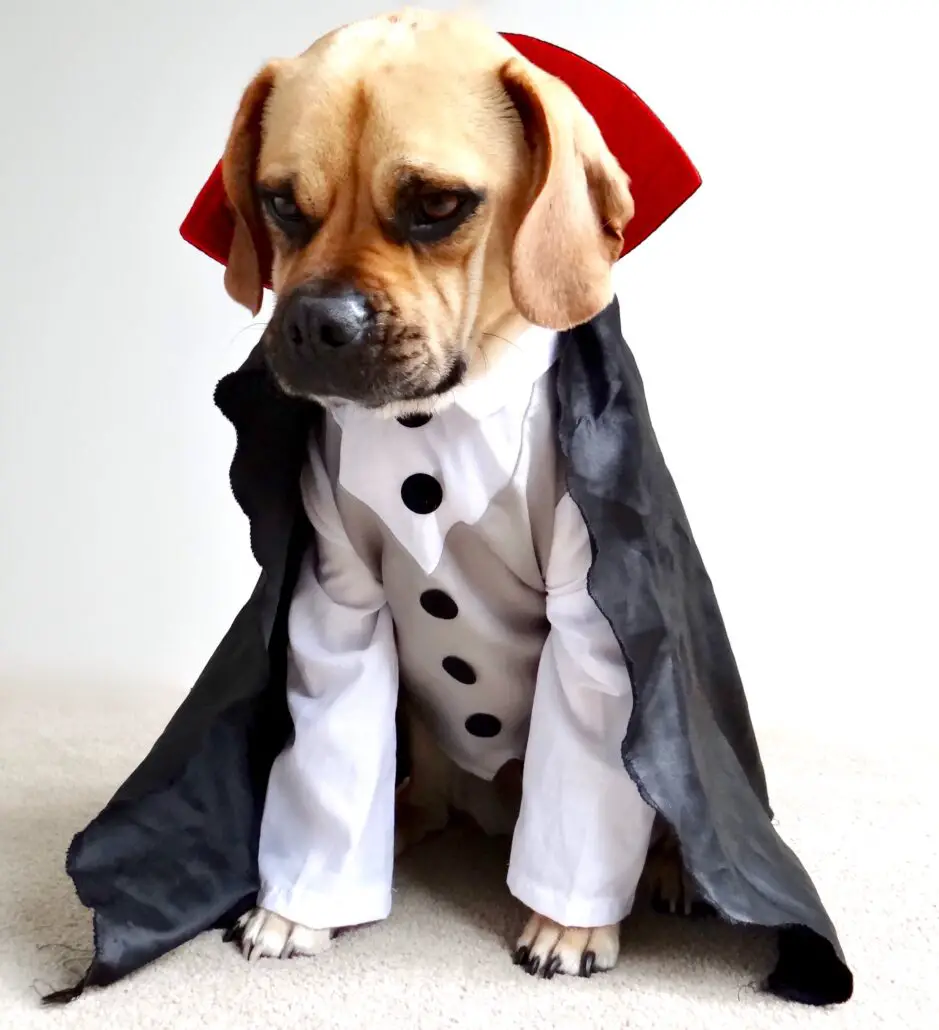
| Puggle | |
| Life Expectancy | 10-15 Years |
| Size | 33-38 cm tall, 8-13 kg in weight |
| Grooming | They have a dense double coat which tends to shed. Weekly brushing will help with shedding. They only have to be bathed when needed, but be sure to check that it stays clean between the folds of its skin. |
| Exercise Needs | They need a lot of exercise to keep from becoming bored. |
| Health Issues | Stenotic Nares, Hip Dysplasia, Hypothyroidism, Patellar Luxation, Epilepsy, Cherry Eye |
| Temperament | They are sweet and clever. They tend to like everyone, including small children and other pets. They do however tend to bark and howl a lot. |
| Family Pet or Guard Dog | They bark too much to be an effective alarm and aren’t big enough to provide protection as a guard dog. They are well fitted to be family pets though. |
Cons:
They tend to bark a lot and they also shed quite a bit. They are quite difficult to train and have been known to run off and get lost.
Pros:
They’re adorable and get along well with everyone, including children and pets. They don’t get separation anxiety and they are happy living in apartments as long as they get their exercise.
Labradoodle
The Labrador/Poodle hybrid has become immensely popular as a family pet. They are quirky, fun, intelligent and loyal.
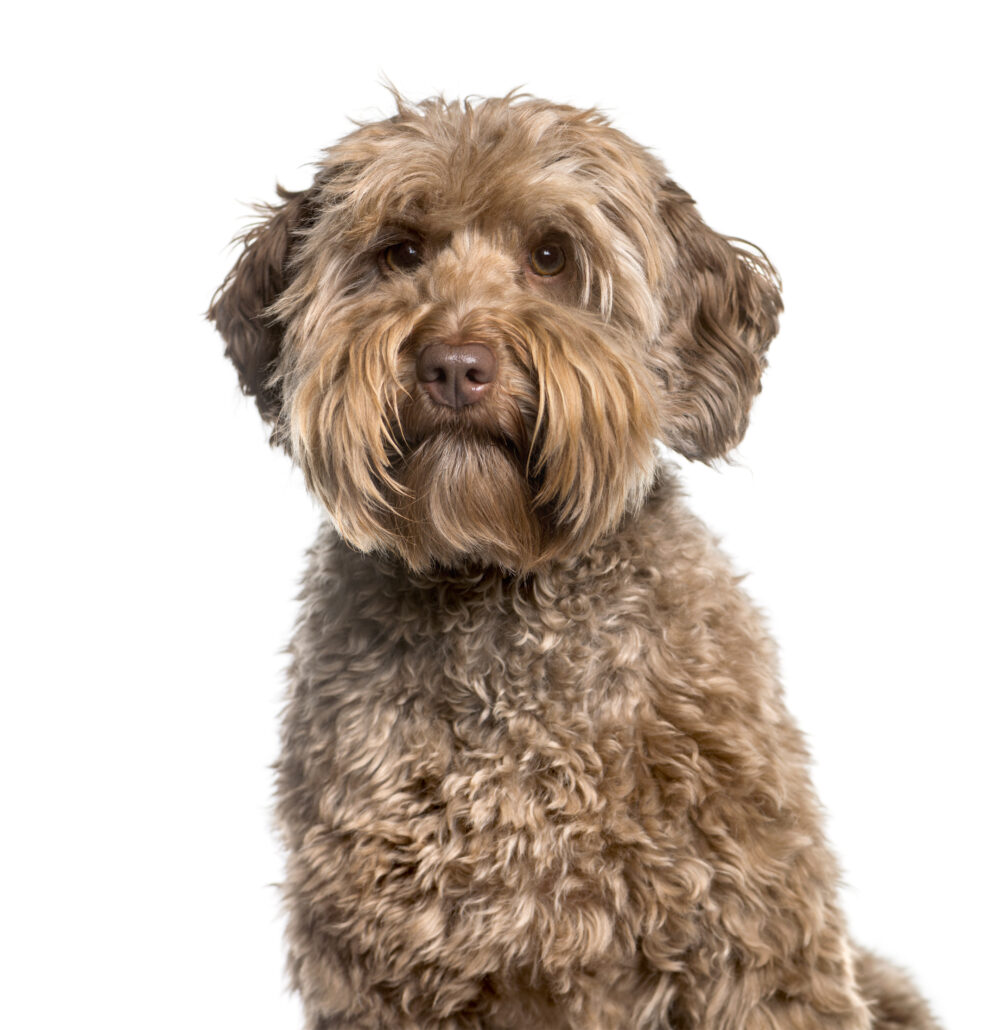
| Labradoodle | |
| Life Expectancy | 12-14 Years |
| Size | 53-61 cm tall, 22-30 kg in weight |
| Grooming | They are bred not to shed, but grooming requirements will vary depending on the type of coat. They should generally be brushed once or twice a week and visit a professional groomer every couple of months. |
| Exercise Needs | They need quite a lot of exercise, it would be best if they had a large yard to play in. |
| Health Issues | Ear Infections, Hip Dysplasia, Elbow Dysplasia, Epilepsy, Allergies, Diabetes, Progressive Retinal Atrophy, Hypothyroidism |
| Temperament | They are smart and friendly towards everyone, including children and other dogs. |
| Family Pet or Guard Dog | They are too friendly to make good guard dogs, but they are wonderful family pets. |
Cons:
There’s not much bad to say about Labradoodles. They may accidentally knock down small children if they get too excited while playing. They might be a little too energetic to live in an apartment.
Pros:
Labradoodles are amazing, loving pets. They don’t shed much, they are easy to groom and easy to train. They are friendly towards everyone and they love playing.
Conclusion
Even if you have to work a lot, there is a breed that’s right for you.
The trick is making sure you find a dog that fits your needs while making sure that you can also accommodate the needs of the dog.
Hopefully, this list can help you narrow down your decision.
Do Airedale Terriers Make Good Guard Dogs? – Are They Protective? Airedale Terriers may not be top ranking on AKC’s list of top breeds (ranking at 60 out of 196), but it’s true to say they aren’t called ‘The King of The Terriers’ for nothing. The Airedale is the largest of all the terrier breeds and is […]
Do Beagles Bark A Lot? – What’s Their Temperament Like? Beagles are quite possibly one of the cutest canines on the planet. These loving, sociable dogs are full of life and energy and can make such wonderful family companions becoming the life and soul of the household. There are so many positives to owning a […]
Do American Bulldogs Get Separation Anxiety? – How Long Can They Be Left Alone?
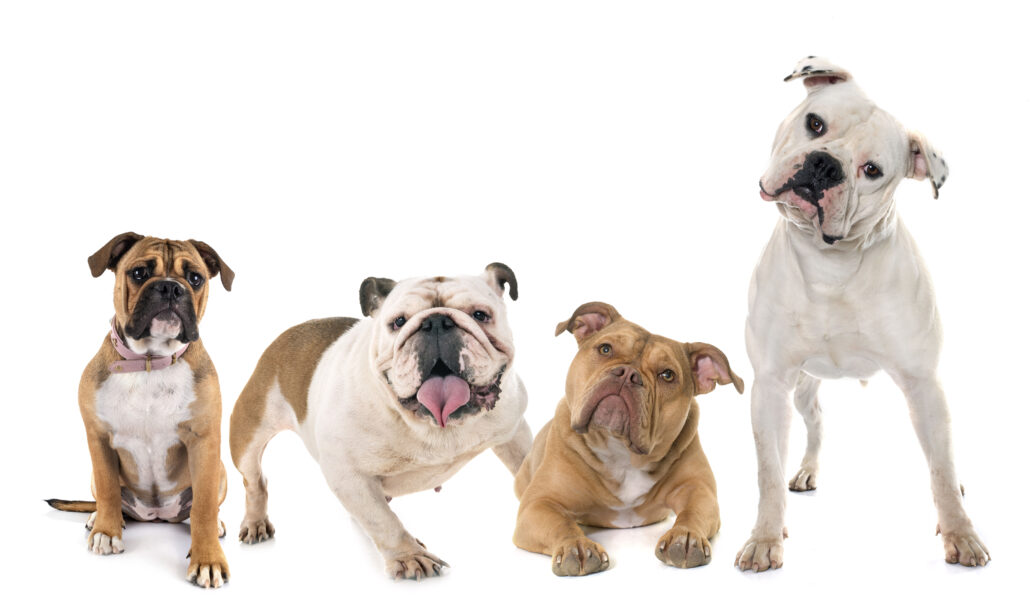
American Bulldogs are quite possibly one of the greatest companions you will ever have in your life.
They are a well-socialized breed that enjoys very much being in the company of others. They can’t help but lavish up all the attention that is on offer to them and find being around others is not only fun but also a comforting experience.
This wonderful breed is specifically bred as companion dogs (historically bred for farming work) and spending too much time on their own can become stressful for them and cause anxiety.
Unfortunately it is common for American Bulldogs to get separation anxiety. If you plan to bring this breed into your life you must be prepared to dedicate time and bring true friendship into the equation.
Do American Bulldogs Get Separation Anxiety?
Yes, unfortunately, American Bulldogs do suffer quite severely with separation anxiety.
The level of anxiety experienced will ultimately vary between different dog personalities however for the most part this breed does struggle with the prospect of being on their own for long periods.
Bulldogs require a high level of attention and have an innate need for physical closeness. This can often cause problems within the household since it is impossible for us as humans to be with our canine friend at all times.
Being a dog owner of any breed is a big responsibility however owning a bulldog can take ownership to a new level and bring additional obligations into the mix.
Luckily there are some key things you can do as an owner to try and help with this unfortunate situation which we will discuss in more detail later.
Separation anxiety will usually occur from a young age therefore you must nip this in the bud as early as possible.
Can American Bulldogs Be Left At Home While I Work
Many breeds of dog will happily sit at home all day whilst you are at work without a care in the world however it is true to say American Bulldogs don’t usually fall into this category.
In an ideal world, they would love for you to stay at home with them all day snuggled up on the sofa and going out for walks with them on demand.
This isn’t to say that working professionals that are out all day cannot own a bulldog, however out must ensure there are some steps in place to prevent your bulldog becoming lonely and suffering from separation anxiety.
Dog training is key here! A bulldog that has gone through proper training will have learnt that being on their own is not the end of the world. They will have learnt to deal with time on their own and relax under these circumstances.
What Are the Signs of Separation Anxiety?
Separation anxiety may seem like an insignificant sign of neediness, but in reality, this is a serious mental health illness that needs to be rectified as soon as possible.
Luckily it is very easy to diagnose if your bulldog is suffering from separation anxiety since the behavior is abnormal and well on display for you to see. Some signs you should look out for are:
Destructive Behavior
This behavior is pretty prevalent for bulldogs that suffer from separation anxiety.
Chewing and biting at furniture, carpets and pretty much anything else they can get their hands on is pretty common.
This can cause havoc in your home and is a behavior that must be reversed for both yours and your dog’s sanity.
Drooling and uninterested in food
It is fair to say that bulldogs do tend to drool in general, but if you would consider this behavior as excessive and happening much more frequently you may have a very unhappy pooch on your hands.
Bulldogs that suffer separation anxiety can often go off their food and will only want to eat when you are around. Check out this great video that shows how to manage this hunger strike behavior.
Vocalization
American Bulldogs are a relatively quiet breed that does not take part in excessive or unnecessary braking behavior.
If your bulldog starts to vocalize a lot more than usual then it is fair to say that they may be suffering from separation anxiety. Barking, growling, grunting and whining is pretty common.
Uncontrolled bladder and bowel Movements
With proper training early on most dogs, in general, are taught that when they need the toilet they must go outside, either in the garden or out for a walk.
Toileting in the house should be a thing of the past once puppy training is complete. If your bulldog starts peeing and defecating excessively in the home then separation anxiety may be the cause.
Self-Destruction
As well as destruction in the home, American Bulldogs are known to become destructive towards themselves when suffering from separation anxiety.
Self-harming is common and can consist of biting at chewing at their body such as their hair and paws. This behavior in particular can be heart-breaking for owners to witness.
Shaking and Shivering
Lastly, but certainly, not least you may notice your bulldog shanking and shivering if they are feeling anxious and lonely.
Bulldogs love companionship and feel much safer in the presence of others. This can be a sign of nervousness and worry which is a very clear sign your bulldog may be suffering from separation anxiety.
How to Avoid Separation Anxiety
As you can see some of the signs of separation anxiety in bulldogs are not very pleasant and this is a situation you will want to nip in the bud as soon as possible for the welfare of both yourself and your canine friend.
With that being said, you’ll be pleased to hear there are numerous ways in which you can help your pooch overcome these issues with a bit of time and patience on your part.
Let’s take a closer look at some of the steps you can take to help your bulldog get better control over their emotions and unwanted behaviors.
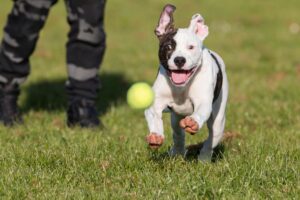
Training from Young
As the saying goes, start as you mean to go on, and this couldn’t be any a truer word when it comes to your canine friend.
Early socialisation and training from a young age can make all the difference in how your bulldog feels when you are not around. Early training helps to develop their brain and habits which can lead to a much happier and relaxed dog.
Training can also help promote independence which can help eliminate the anxiety experienced from separation.
Get Into a Routine
One of the key parts of training is getting your bulldog into a regular daily routine and sticking to it.
That way your dog understands when you will be absent and when you will be available for one on one time so they can effectively have something to look forward to.
Bulldogs thrive on a routine which can help them become much more balanced and independent when they know they need to be.
Crate Training
Crate training is most commonly reserved for puppies however many types of dogs will need to be kept in a crate whilst owners are not at home.
Bulldogs can become pretty destructive, particularly if they are suffering from severe separation anxiety.
To ensure your sofa stays intact and your carpets are not ripped to shreds crate training can be a great way to stop this unwanted behavior.
Make Sure You Give Them Attention in the Time You Do Have
Even though you may not be at home all the time it is important that when you do have the time you dedicate some of this to your bulldog.
Once your bulldog is aware that once you get home from work they will have you all to themselves this can often eliminate some of the anxiety they experience throughout the day.
Instead of feeling depressed and anxious, they have something to look forward to instead.
Make Sure All Their Needs Are Met While You Are Not There
Whilst you are not at home always make sure your bulldog has everything they could possibly need to keep them feeling happy and safe.
Check before you leave the house that your bulldog has a clean, fresh supply of water that will last them whilst you are not there.
Leave a handful of biscuits out that they can munch on throughout the day (weight management permitting) and provide a safe place for your dog to cuddle up for a snooze such as their favorite dog bed or blanket.
Make Sure They Have Toys
Toys are an important aspect of keeping your bulldog engaged and fully entertained throughout the day whilst you are not around to keep them occupied.
Providing safe dog toys can help keep your bulldog focus their energy elsewhere and can ease boredom and reduce stress levels.
Destruct Proof the House
One of the best ways to deter a destructive bulldog that tends to throw their toys out of the pram when you are not there is to destruct proof your house.
Cover furniture to prevent biting and scratching and remove any loose or dangerous items that your bulldog may want to get hold of.
Remove garbage bags, mend gaps and holes, tie-down your possessions and minimize escape routes. Doggy doors can also be a great idea if you have a secure back garden.
Have another Dog in the House
Since bulldogs adore the company of others it could be an idea to buy your pooch another doggy companion if your circumstances permit.
Many owners experience a reduction of separation anxiety in their bulldogs when introducing another into the household.
Bulldogs generally get on better with most bigger dogs, however, a breed of the opposite sex is usually recommended.
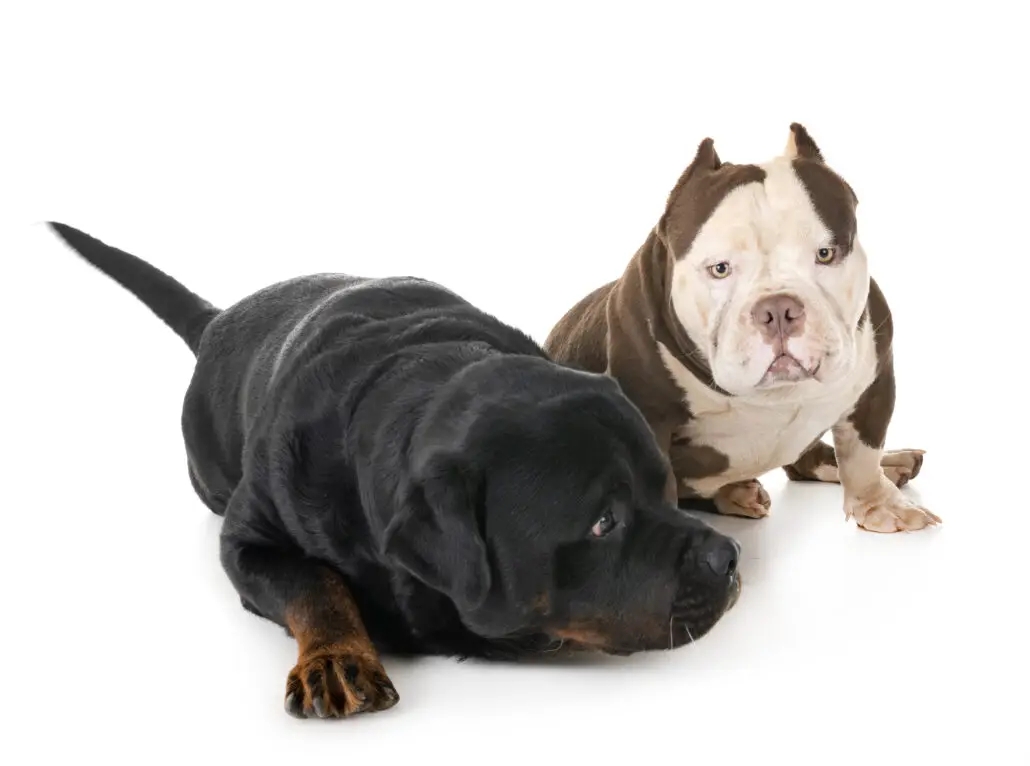
How to Train Your American Bulldog to Overcome Separation Anxiety
Training is highly recommended for American Bulldogs that suffer from separation anxiety.
There are a series of simple steps you can take which will help with training your bulldog to learn to be left on their own without the need of taking your canine friend to a professional dog trainer:
- Stay calm when entering or leaving your house. Do not make a big deal or fuss out of this activity. Dogs feed off our vibes and behaviors and therefore a calming influence is required.
- Leave items around the house that smells like you as a comforting tool.
- Devise a word or sentence to use every time you leave the house that will signal to your dog that you will be back. Use a soothing and calming tone of voice.
- Don’t always get involved when your dog is playing with toys. Allow them the opportunity to get used to playing on their own so they are comfortable doing this when you are not there.
- In small stages confine your bulldog to certain rooms in the house for a short period so they can get used to being on their own. Make a huge fuss of them when you return so they get used to being left alone, but with the knowledge that you will always be coming back.
How to Stop My American Bulldog from Chewing and Biting Everything?
In addition to training, there are a series of calming medications on the market for dogs both man-made and natural that can help with anxiety.
Medications
There many types of over the counter calming medications on the market that are designed specifically for dogs.
For the most part, these are not particularly strong, however, you may find these to be helpful in mild cases of separation anxiety since they have a calming influence and are formulated to take the edge off.
You will find that most of these medications are made up of herbs that have been proven to help with calming and reducing stress.
For the most part, this type of everyday medication works well, but anything stronger must be prescribed by your vet.
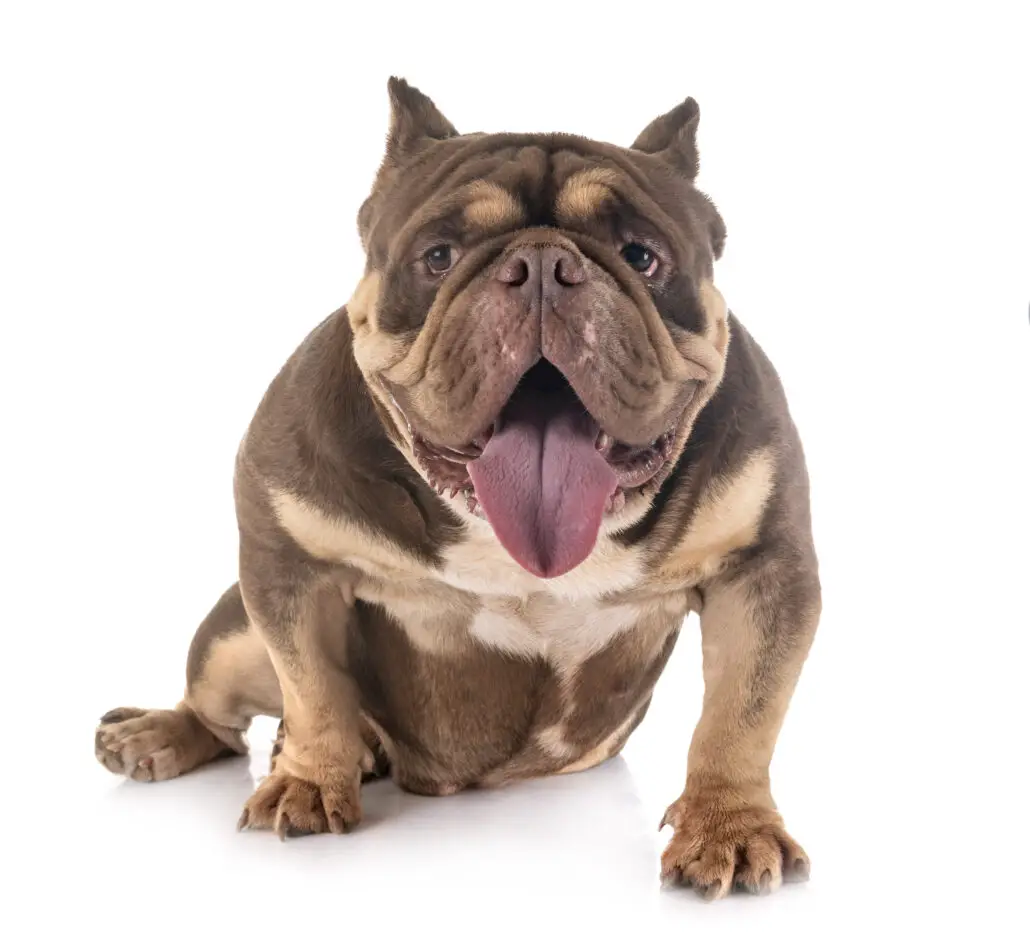
CBD
CBD products are becoming much more popular these days in both human and animal medications to help relieve anxiety and stress-related symptoms.
CBD is a natural product that is extracted from the cannabis plant and is showing great promise as a natural healing remedy.
Many CBD brands on the market are now widely available and have been specifically designed for dog use. One of the very best right now is Nuleaf Naturals which has shown to significantly reduce stress and anxiety levels in our canine friends.
Check out their website for more details
Consult Your Vet for Other Medications
If you are at all worried about your bulldog’s separation anxiety you must speak to your qualified vet who will be able to advise you further.
Stronger medications may be required however these can only be obtained via prescription.
FAQ
Are American Bulldogs Destructive?
For the most part, American Bulldogs are very cool, calm and collected.
They are not known to be excitable dogs and have relatively low energy levels however separation anxiety can, unfortunately, send them over the edge. This can cause destructive behavior which some would say is very out of character for the breed.
How Can I Calm a Dog Panic Attack?
Stay calm yourself. It can be easy for you to start panicking too. Stay close to your dog and use a quiet and calming voice as a soothing tool.
Make sure your dog is comfortable and secure. Provide a blanket that is familiar to them and wrap around their body to help them stay warm and cozy.
How Long Can an American Bulldog Be Left Alone
American bulldogs should not ideally be left at home for long periods and a general rule of thumb for most breeds is no more than 4 hours.
This can be tricky particularly if you are a working professional that is out at work for most of the day.
Try to make a trip home at lunchtime if you can to break up the day for your pooch or ask a friend or neighbor to pop in throughout the day if you have the means to do so.
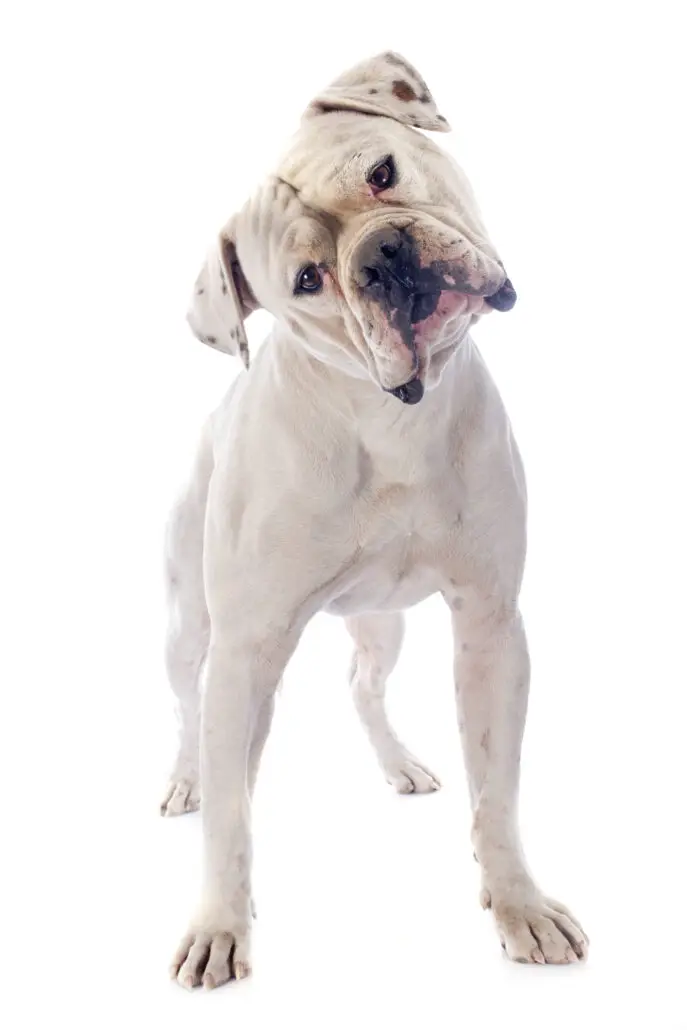
Conclusion and Key Take-Aways
In conclusion, there are some key things to take away when dealing with an American Bulldog that suffers from separation anxiety:
- Most Bulldogs suffer from some form of separation anxiety and this is a consideration you must take into account before deciding to take on this breed.
- You must ensure you have plenty of time to spend with your bulldog when you are at home to make up for the time that you are away. This gives your dog something to look forward to.
- Training from an early age is highly recommended and separation anxiety is something you are likely able to avoid in the future if your bulldog has taken part in all the right training that has provided themselves with a sense of independence.
- The signs of separation anxiety in bulldogs are very clear. Can you remember what these are?
- Having a defined daily routine is key since bulldogs love stability. Try to keep your schedule as repetitive as possible so your bulldog knows what to expect and when.
- Make sure your bulldog has all they need at home when you are not there such as food, water, a comfortable place to rest and toys to keep them entertained.
- Calming medication is widely available to buy over the counter however if you think you need something a little stronger a trip to your vets is highly recommended.
American Akita Vs. German Shepherd – Which Dog Should You Get When comparing the American Akita and the German Shepherd, you will find that they are naturally protective and loyal to their families. Plus, these dogs are both distinctive-looking and large. Akitas are classed as members of the working dog group. German Shepherds are classified […]
Black Russian Terrier Vs. Giant Schnauzer – Which Dog Should You Get There are many similarities and many differences between Black Russian Terriers and Giant Schnauzers. Placed side by side, you may have trouble telling them apart. Both of these breeds were initially bred to be guard dogs, so they are naturally suspicious of any […]
CBD Oil for Bullmastiffs – Is it Actually Effective? Bullmastiffs are a loving and gentle, but protective dog to have as a pet, loyal, and full of energy. If you are looking for a real companion who loves your company, then a bullmastiff is for you. Bullmastiffs are a cross between an old English bulldog […]
Pros And Cons Of Aussiedoodle Ownership – Should You Get This Dog? The Australian Shepherd Poodle, or Aussiedoodle is rapidly gaining popularity worldwide, but what do you need to know before deciding whether you want to add one to your life? Let’s investigate these furry friends in order to ease your decision. AUSSIEDOODLE OVERVIEW 1. […]
BEST PET WELL PRODUCT LISTS
Enfold Construction
1818 N Vermont Ave
Los Angeles, CA, United States
(555) 774 433
hello@en-co.com
Office Hours
Mo-Fr: 8:00-19:00
Sa: 8:00-14:00
So: closed

